Understanding Children's Coughs and Wheezing: What Every Parent Needs to Know
Coughs and wheezing are common symptoms in children, often signaling respiratory infections like colds or bronchitis. While most cases are mild and can be managed at home, understanding their causes, symptoms, and appropriate care is vital for parents and caregivers. This guide explores safe and effective home remedies, signs that require medical attention, and prevention strategies to ensure your child's comfort and health during respiratory illnesses.
Causes and Symptoms of Coughs and Wheezing in Children
What causes coughing and wheezing in children, and what symptoms should parents recognize?
Coughing and wheezing in children are typically caused by respiratory infections such as common colds, bronchitis, or bronchiolitis. They can also stem from allergies, asthma, or other respiratory conditions. These symptoms often appear along with runny noses, sore throats, and sometimes a high temperature.
Parents should be alert for signs like persistent coughing, especially if it’s severe or lasts more than two to three weeks. Wheezing—a high-pitched whistling sound while breathing—is another common sign, indicating narrowing of the airway.
Other symptoms to watch include difficulty breathing, shortness of breath, and chest tightness. Noisy breathing, nasal flaring, or a bluish tint around lips and face also point to more serious breathing problems.
From an environmental perspective, triggers such as smoke, pollen, dust, and exercise can inspire coughing or wheezing episodes, especially in children with allergies or asthma. Recognizing recurring patterns, like night-time coughs or episodes provoked by allergens, can also help identify asthma.
When to seek urgent medical care
Parents should seek immediate medical assistance if their child shows signs of severe respiratory distress. These include difficulty speaking, grunting while breathing, bluish skin, nasal flaring, or the use of muscles around the ribs to breathe. Rapid or irregular breathing, high fever, refusal to eat or drink, or unresponsiveness are clear signs that the child needs urgent evaluation.
Understanding these symptoms and causes helps ensure early intervention, preventing complications. Remember, most coughs and wheezing episodes from viral infections are manageable at home, but persistent or severe symptoms require prompt medical attention.
Safe and Effective Home Remedies to Soothe Children's Coughs
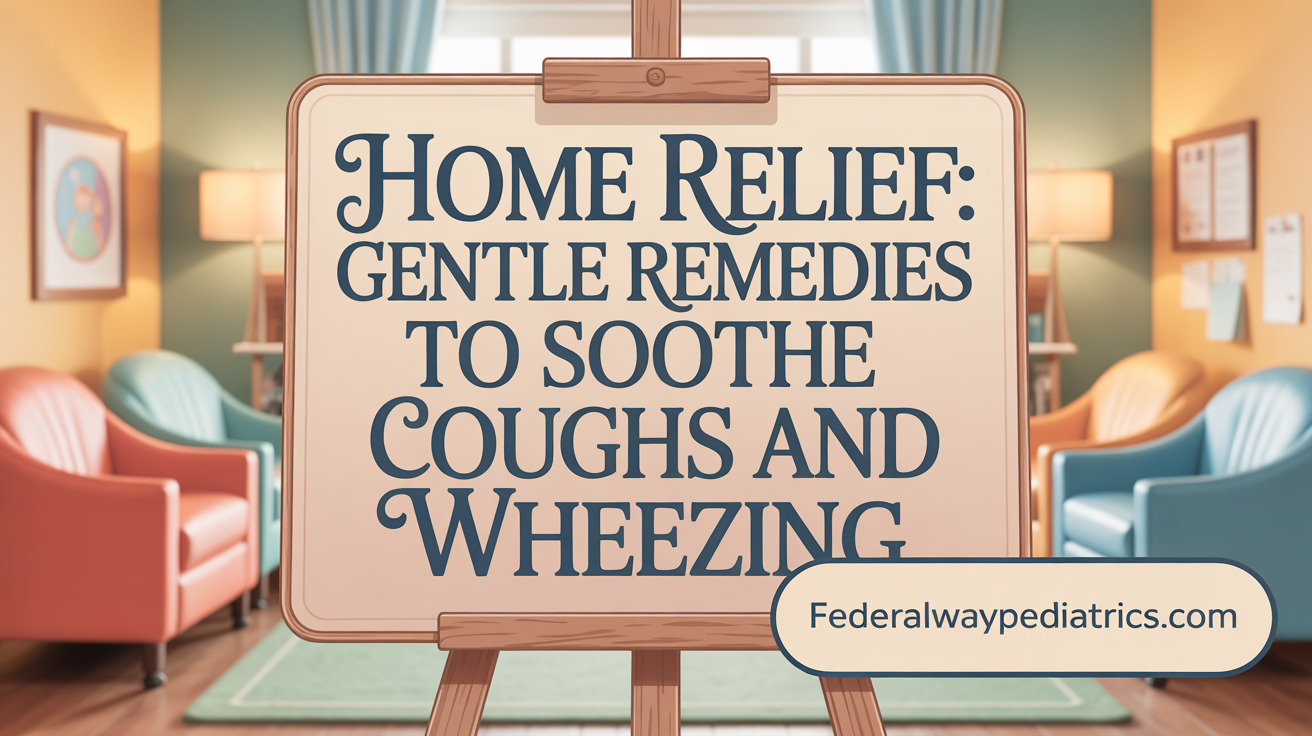
What are safe and effective home remedies to soothe a child's cough?
Many parents seek gentle, natural ways to help their children recover from coughs. Offering warm fluids such as honey (for children over 1 year old) can soothe the throat and reduce coughing episodes. Honey has been shown to lessen nighttime coughs and improve sleep.
Using a cool mist humidifier or taking steamy showers can add moisture to the air, which helps loosen mucus and ease nasal congestion. This is especially helpful during the night when coughing tends to worsen.
Keeping children well-hydrated is essential. Fluids like water, herbal teas, or broth support immune function and help thin mucus, making it easier to cough up. Rest is equally important, as it allows the body to heal.
Saline nasal sprays or drops are effective for clearing nasal congestion, which often contributes to coughing. These can help reduce postnasal drip, a common cause of cough in children.
While these remedies are generally safe, parents should watch for signs of worsening symptoms such as difficulty breathing, persistent high fever, or signs of dehydration. If any severe symptoms appear, seeking medical advice is necessary to ensure proper care.
When to Seek Medical Attention for Your Child’s Cough and Wheezing
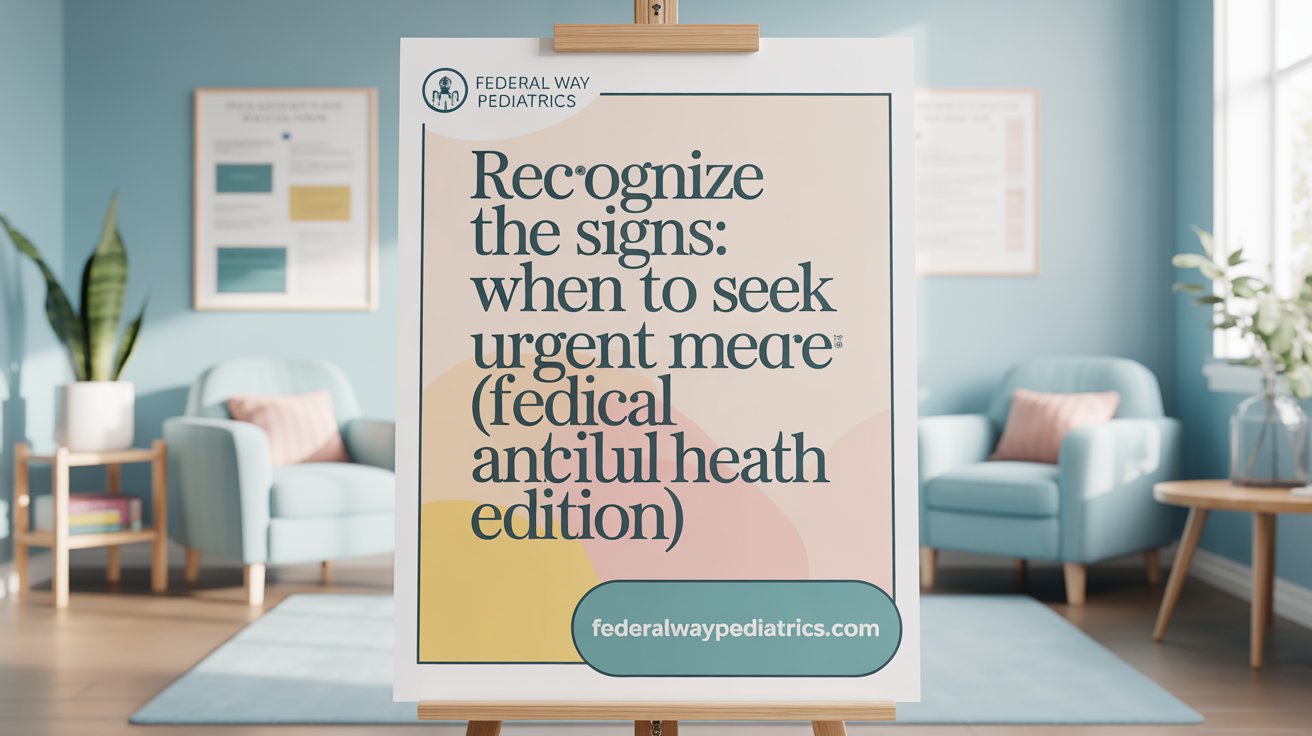
When should parents seek medical attention for a child's cough and wheezing?
Most childhood coughs and wheezing are caused by viral infections like colds, which typically resolve at home within 2 to 3 weeks. However, parents should be alert to signs indicating that medical care is needed sooner.
Urgent medical attention is necessary if the child's symptoms worsen or persist beyond a week. Specific warning signs include difficulty breathing, rapid or irregular breathing, and bluish skin around the lips or face—these are signs of respiratory distress that require immediate care.
Parents should also watch for signs such as extreme fatigue, refusal to eat or drink, and unrelenting cough, especially if accompanied by a high fever over 102°F (39°C). These could suggest more serious illnesses needing prompt intervention.
Children showing signs like wheezing, persistent coughing, or symptoms of asthma call for quick evaluation to prevent complications. Infants and very young children with sudden or severe symptoms warrant urgent medical attention without delay.
In case a child is choking, stops breathing, or turns blue, immediate action such as performing CPR is critical. When in doubt, erring on the side of caution and seeking professional care ensures the child's safety.
Regular monitoring at home—observing breathing patterns, energy levels, and temperature—helps parents decide when to seek help. Early medical intervention can prevent worsening of respiratory conditions and ensure children receive the appropriate treatment.
Distinguishing Normal From Abnormal Coughs in Children
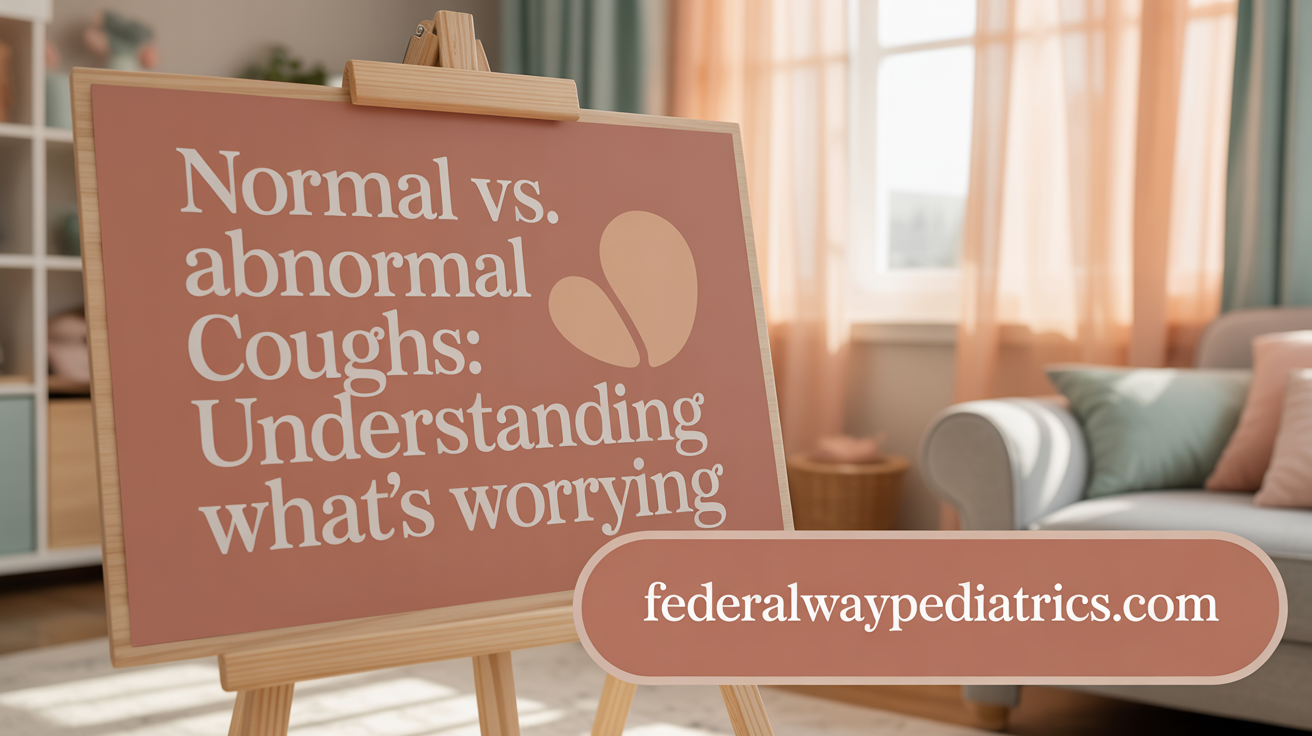
What are the differences between normal and abnormal coughs in children?
A cough in children is often a natural part of recovering from a cold or respiratory infection. Normal coughs are usually short-lived, may be dry or produce mucus, and tend to improve within 2 to 3 weeks without special treatment. They help clear the lungs and airways of mucus or irritants.
In contrast, abnormal coughs are often persistent, harsh, or occur mainly at night. These coughs may be accompanied by wheezing, stridor (a high-pitched sound), and signs of respiratory distress, such as difficulty breathing, bluish lips, or chest retractions. Such symptoms suggest underlying conditions like asthma, croup, whooping cough, or pneumonia.
Cough types also provide clues: a barking cough often indicates croup, a whooping cough is characterized by a sudden, severe cough followed by a gasp, and a productive cough with yellow or green mucus signals mucus drainage but is common in viral infections. Severe or worsening coughs, especially those lasting more than a week or accompanied by high fever or labored breathing, need urgent medical attention.
Assessment of the cough's quality—whether dry, wet, or barky—helps in understanding its cause. However, if the cough is persistent, severe, or associated with other worrying symptoms, consulting a pediatrician is vital for proper diagnosis and treatment.
Supportive Care Practices to Help Children Recover Comfortably at Home
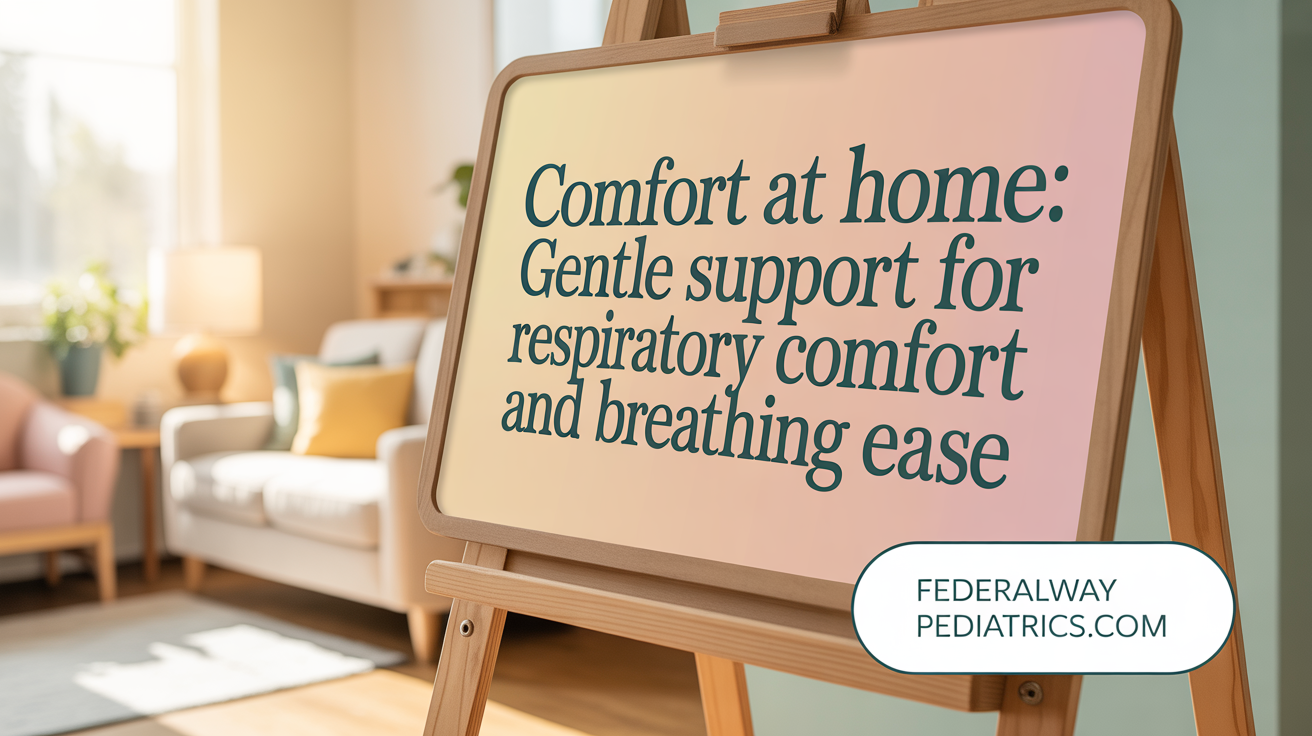
What supportive care practices help children with coughs and wheezing recover comfortably at home?
Caring for a child with a cough or wheezing involves several supportive measures that can make them more comfortable and aid their recovery. Hydration is essential. Offering plenty of fluids such as water, warm tea, broths, or even cold treats like popsicles can soothe the throat and help loosen mucus, making it easier for children to breathe.
Adding humidity to the air with devices like cool-mist humidifiers or steam from steamy showers can keep the air moist. This moist environment helps reduce airway irritation and congestion. Saline nasal solutions, whether sprays or drops, can also clear nasal passages and ease breathing difficulties.
Elevating the child's head during sleep with extra pillows can minimize postnasal drip and suppress coughing at night. For children over 1 year, honey (½ to 1 teaspoon) can soothe the throat and lessen cough severity, providing additional comfort.
Ensuring the child gets plenty of rest is vital as it boosts the immune response and speeds healing. Creating a calming environment, free from irritants like tobacco smoke, can further support recovery. It's important to monitor symptoms carefully, and prompt medical attention should be sought if there are signs of difficulty breathing, persistent high fever, or worsening condition.
These simple, home-based supportive practices can significantly improve comfort and health outcomes for children suffering from coughs and wheezing, helping them recover more easily and comfortably.
Preventing Respiratory Illnesses That Cause Coughs and Wheezing in Kids
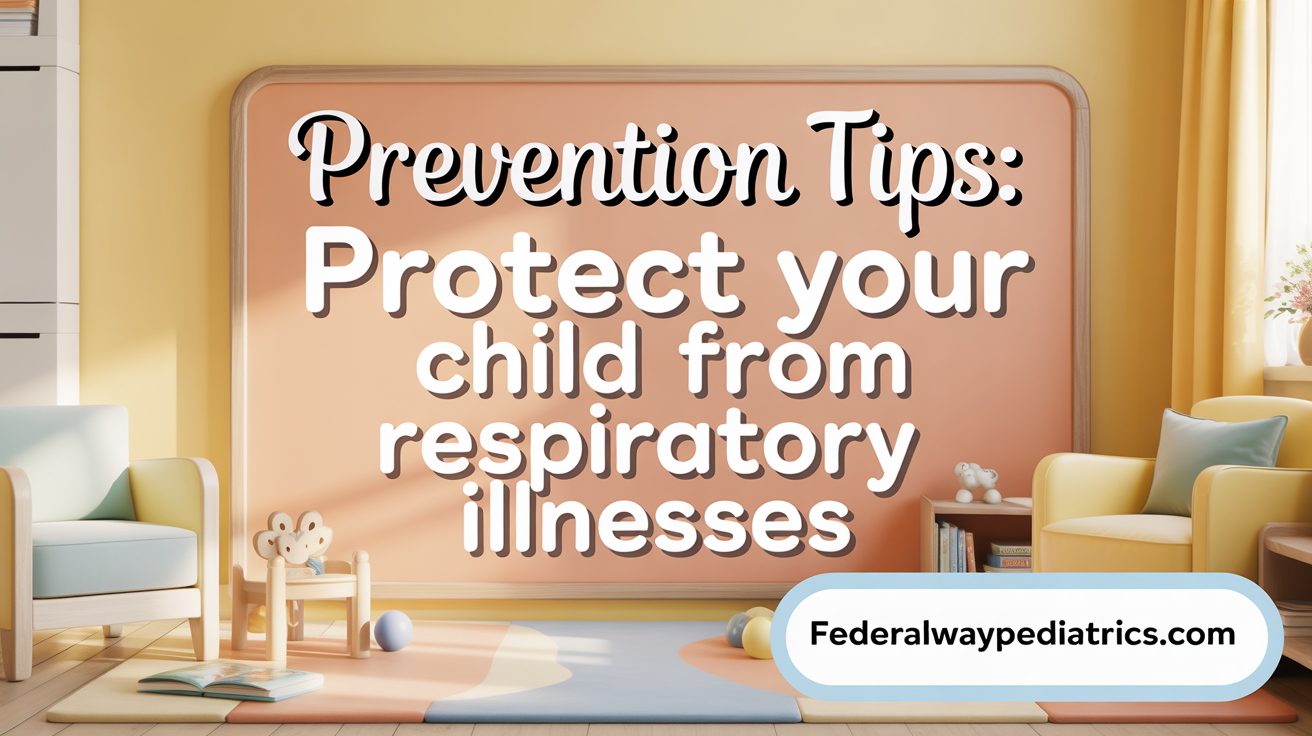
How can parents prevent respiratory illnesses in children that cause coughs and wheezing?
Preventing respiratory illnesses in children involves multiple strategies aimed at reducing exposure to germs and environmental triggers. Good hygiene practices are fundamental; encouraging regular handwashing with soap, especially before eating and after outdoor activities, helps minimize infection risk. Using saline nasal rinses can also keep nasal passages clear and reduce susceptibility.
Avoiding smoke and other irritants is particularly important. Parents should keep children away from cigarette smoke, vaping, and indoor pollution from cleaning products, strong fragrances, or mold. Maintaining a clean, allergen-free home environment by controlling dust mites, pet dander, and mold further supports healthy respiratory development.
Vaccinations are vital in preventing many respiratory infections. Ensuring children receive recommended vaccines for influenza, pneumococcus, and pertussis helps protect against serious illnesses that can cause wheezing and cough.
Managing existing allergies and asthma with appropriate medications prescribed by healthcare providers is crucial. Keeping a symptom diary and avoiding known triggers such as pollen, pet fur, or cold air can prevent episodes.
Supporting a healthy lifestyle boosts overall immunity. Providing a balanced diet rich in fruits and vegetables, encouraging sufficient sleep, and promoting regular physical activity help strengthen the immune system.
Early detection and response to symptoms are also essential. Monitoring children's respiratory health and seeking timely medical advice can prevent the progression of illness and reduce the risk of complications.
Empowering Parents for Confident Care
Understanding the causes, symptoms, and appropriate home remedies for children's coughs and wheezing empowers parents to provide safe and effective care at home. Utilizing natural remedies like honey (age-appropriately), warm fluids, humidifiers, and saline sprays can comfort your child while supporting recovery. Recognizing warning signs and knowing when to seek medical attention ensures timely intervention, preventing complications. Prevention through hygiene, avoiding irritants, and managing allergies further supports your child's respiratory health. This informed approach helps keep your child comfortable and on the path to healing.
References
- Coughs: Meds or Home Remedies? - Seattle Children's Hospital
- Coughing and wheezing in children | Better Health Channel
- Calming Your Child's Cough | Children's Hospital of Philadelphia
- 7 Home Remedies to Stop a Bad Cough - Everyday Health
- Cough – Kids and Teens (6-18 years) - Kinsa Health
- Treating a Child's Cough | St. Louis Children's Hospital
- Toddler cough remedies: 4 safe methods - Medical News Today
- Bronchitis in children: Home remedies for kids
